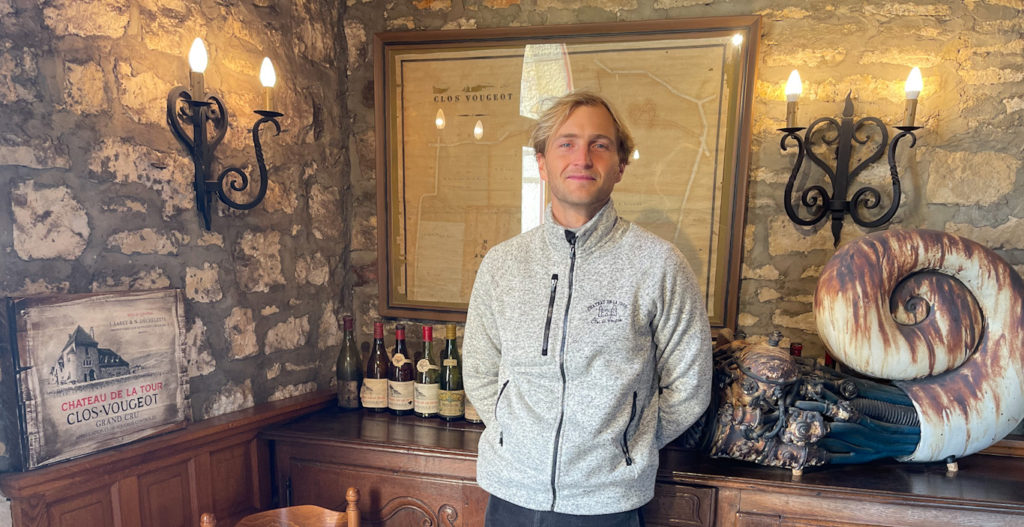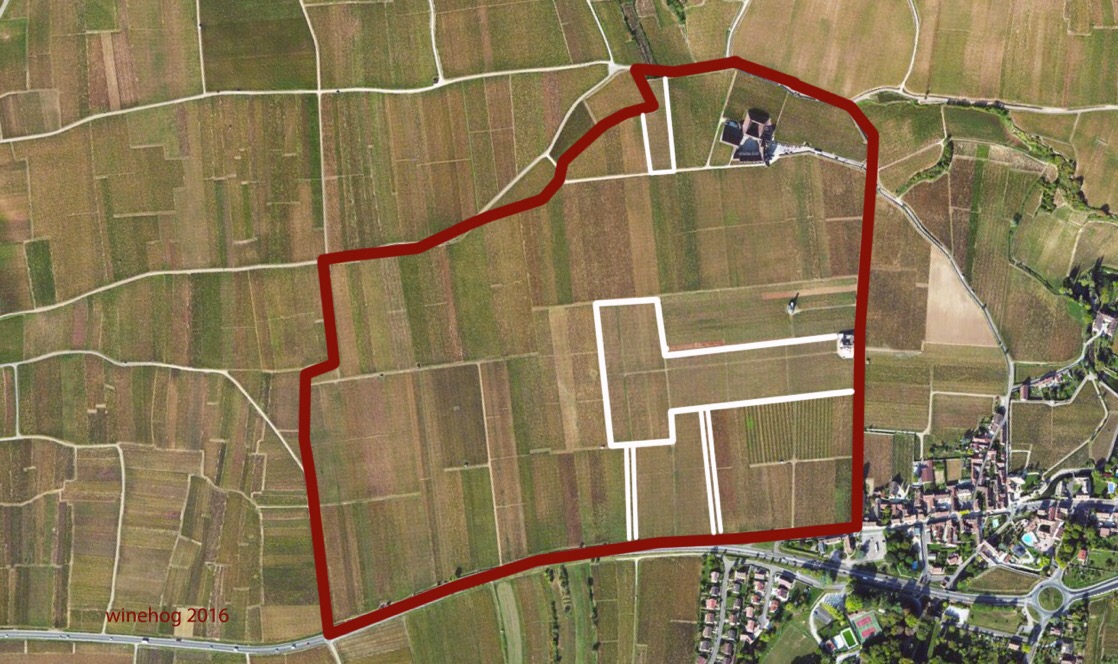The 2021 vintage was difficult and problematic for the Labet family, with significant frost damage in the Côte de Beaune vineyards reducing production and the number of cuvees made.
The family’s core holding, in the Clos de Vougeot, was also hit, but still produced two out of three cuvees, plus a mysterious white (more about this cuvee in a later article).

François Labet and his son Edouard made two fine, delightful Clos Vougeot in 2021, plus a white wine in development outside the normal range, but also from the big clos.
(Just to clarify: I use Clos de Vougeot for the place and Clos Vougeot for the wine. It may not be logical, but at least I’m consistent.)
The Labet estate also made some cuvees from the Côte de Beaune. These will be tasted later when elevage is completed.
Read more about Chateau de la Tour here:
- Visit to Chateau de la Tour – Tasting the 2022s
- Visit to Chateau de la Tour – Tasting the 2021s
- Visit to Chateau de la Tour – Tasting the 2020s
- Visit to Chateau de la Tour – tasting the 2019s
- Visit to Chateau de la Tour – tasting the 2018s
- Visit Chateau de la Tour – tasting the 2016s from cask
- Terroir Insight: Chateau de la Tour Clos de Vougeot V.V.
Chateau de la Tour (as every year)
Chateau de la Tour is the largest owner of Clos de Vougeot vineyards, with holdings in the center of this enormous grand cru.
François and Edouard Labet (usually) makes three cuvées of Clos Vougeot – the Cuvée Classique; the Cuvée Vieilles Vignes; and in recent exceptional vintages a top wine, the Cuvée Clos Vougeot Hommage a Jean Morin, is made.
Chateau de la Tour – a key part of Clos de Vougeot history
Chateau de la Tour is located in the 19th-century castle just below the big, medieval Chateau du Clos de Vougeot. The de la Tour building was erected in 1890, and has been in the Labet family ever since.
It is connected to the main part of de la Tour’s vineyard holdings in the Clos de Vougeot (map below).

Chateau de la Tour owns 5.48 hectares of the clos, with the main section located below the Chateau Clos de Vougeot, oriented north to south, and connected to a 2-ha section in the very center of the vineyard. There are also two smaller plots at the bottom of the vineyard, and one at the top (recently replanted).
The history of the Chateau de la Tour holdings
Chateau de la Tour’s holdings have been in the family’s possession since 1889, making it one of the oldest of the current owners.
A Mr. Beaudet from Beaune acquired some of the vineyards from the estate of Jules Ouvrard in 1889, when the Clos de Vougeot was divided for the first time after being a monopole for several decades. Amongst the six original buyers were several large negociants, including Liger-Belair and Léonce Bocquet (who also bought the chateau).
Mr. Beaudet had a daughter who married Jean Morin of Nuits-Saint-Georges, and they took over her father’s holdings in the Clos de Vougeot. Jean Morin had two daughters, who married into the Labet and Déchelette families, thus introducing the Labet name into the estate. The Labet family had its own domaine in Beaune, and today François Labet is running both Domaine Labet and Chateau de la Tour.
Chateau de la Tour 2021 – the tasting notes
I was (as always) excited to taste the cuvées of Clos Vougeot. The regular cuvée – Cuvée Classique – is made from younger vines which, in this case, are nonetheless fairly old, with an average age of around 70 years.
The cuvée Vieilles Vignes is made from vines older than 80 years, and used all of the remaining fruit, as the Clos Vougeot Hommage a Jean Morin was not made in 2021.
The 2021s are on the cooler side, and especially the Cuvee Classique is quite light-footed when compared to the 2019s and 2020s. It will require some time, as these wines usually do.
The Clos Vougeot Vieilles Vignes is quite a few levels up, and has impressive density.
Chateau de la Tour Clos Vougeot Cuvée Classique 2021
The Cuvée Classique is light-footed for such a big wine. While it has good concentration, it does not match that of the previous robust vintages; this an old-school Clos Vougeot from the times before global warming. Whole-cluster inclusion is somewhat reduced in 2021 (to 45%) as the stems were not fully ripe everywhere. The floral notes are discreet, with white roses and other cool aromas.
(Drink from 2032) – Very Fine – (93p) – Tasted 08/12/2022 – ![]()
You need to login as a Premium subscriber to read the rest of this article. If you are not a Premium Subscriber, use the subscribe function and sign-up.

 - A true vin d’émotion – a Burgundy of passion
- A true vin d’émotion – a Burgundy of passion - A truly hedonistic wine – lively and enjoyable
- A truly hedonistic wine – lively and enjoyable - A vivacious wine for pure indulgance
- A vivacious wine for pure indulgance - A Vin Vif - fresh, energetic and with a light appearance
- A Vin Vif - fresh, energetic and with a light appearance
Leave a Reply
You must be logged in to post a comment.